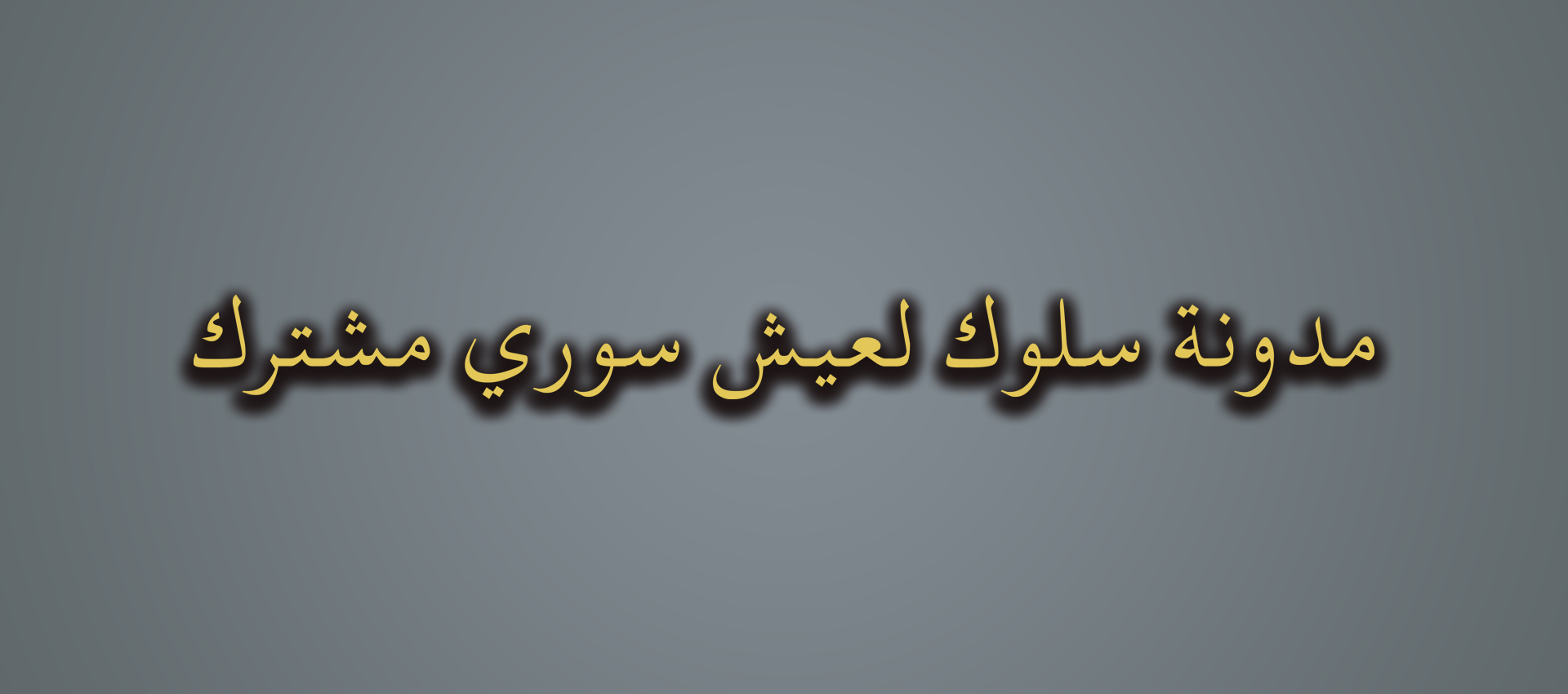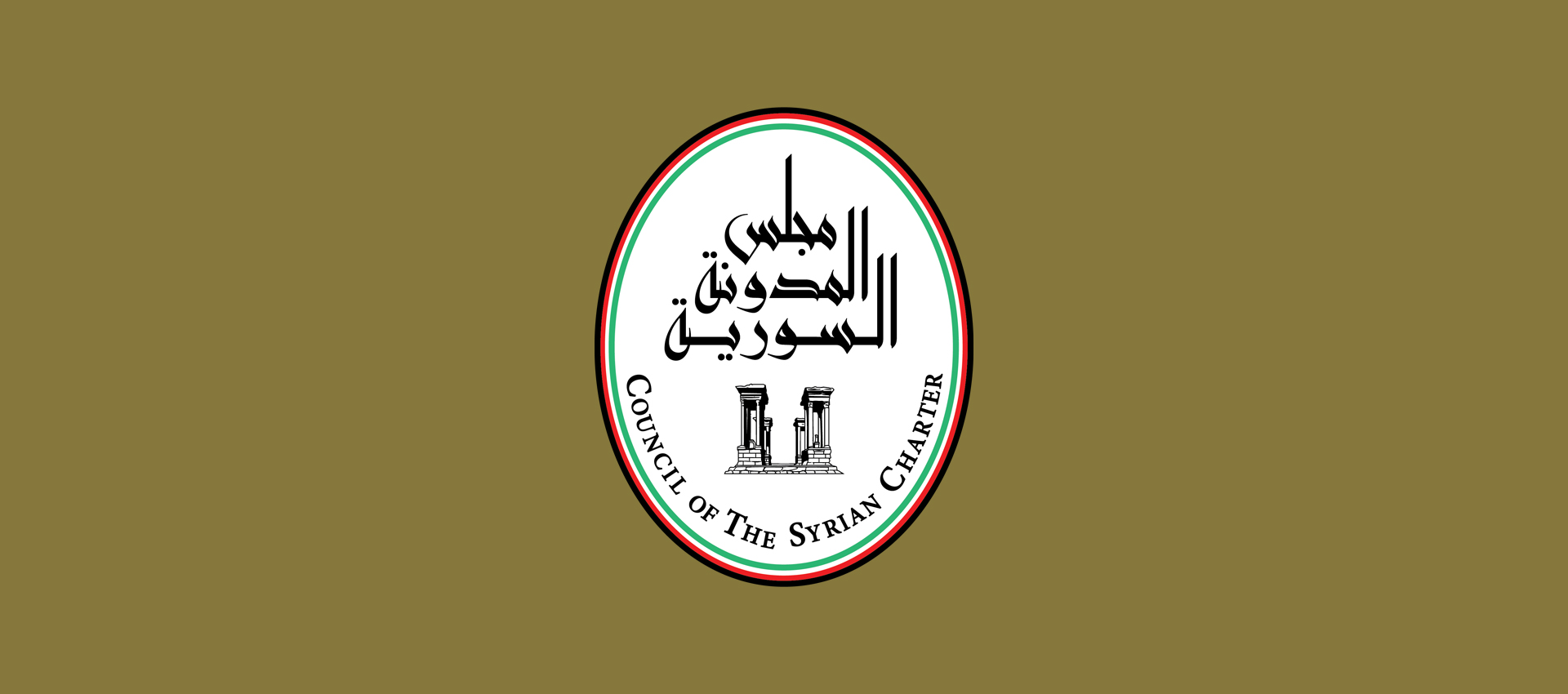The Code of Conduct summarizes a great deal of work, several years of efforts and dozens of dialogue meetings in several European cities between Syrian societal figures from all components of Syrian society. They share common denominators, the most important of which is that they are not involved in the armed conflict, they are liberated from the dualism of the “regime and the opposition” and are aware of the serious risks posed by the continuation of the conflict in and over Syria.
They met, they discussed, they disagreed, they negotiated – and all this without interference or pressure, as the role of the host countries was limited to securing a safe and neutral environment for dialogue, something highly valued and appreciated.
In the end, they agreed and issued a document, under the title: The Code of Conduct for Syrian Coexistence (CoC).
The document consists of a brief introduction and eleven articles, drafted in clear and professional legal language, and it represents what can be considered common denominators for the majority of Syrians, while also establishing a genuine conciliatory atmosphere. The very brief and rich introduction confirms that the Code of Conduct is a convergence document from which Syrians can start their new national project, liberated from the dilemmas of the past and the present that constrain them.
It can be said that the eleven articles of the document are what Syrians agree on; they constitute a balanced and acceptable consensus situation, and it is difficult for anyone to reject them explicitly, unless he or she belongs to extremist parties or ideas – and I do not believe that the Code of Conduct is primarily directed to these people.
The articles of the code; from article 1 “The Recognition of the Territorial Integrity of Syria”, to article 3, “No Victor, no Vanquished”, to article 4 “No Side is Innocent” (holding all conflict parties responsible for what happened), article 5 “Accountability, not Revenge”, and article 6 “Repair the Damage, Restitute and Compensate”, to the 7th article on the humanitarian file: all help to spread a conciliatory atmosphere, consolidate the culture of peace, and enhance the values of citizenship. The other articles acknowledge the diverse identity of the Syrian society (article 8) and “The Common Cultural Heritage” (article 10), while article 9 “Depoliticize the Origins”, are all principles that confirm the Syrian unity ensured by its diversity and richness.
But most importantly, in my view, or the remarkable foresight, is betting on the inevitability of breaking the destructive dichotomy that has ruled Syria for the past ten years, the dichotomy of the regime and the opposition. Indeed, the Code of Conduct – if it reaches everyone and is spread in Syria – would contribute to the crystallization of a national popular current free of that duality/dichotomy that includes the majority of Syrians. The Code of Conduct can change the course of events and impose a solution that is in line with the interests of the Syrian people.
The Code of Conduct and the lengthy dialogues on and about it represent important progress. It is the first purely Syrian societal dialogue in which other countries have no participation or a decisive role. It is a dialogue between Syrian figures from all components of society – from inside and outside Syria. Another important message that the Code sent to all parties and to the international community is that Syrians, even if they live in an almost complete absence of a culture of dialogue, are still able to engage in dialogue and succeed in reaching goals and principles that unite them, if the appropriate atmosphere and conditions are provided for them. Thus, it has aborted all the attempts of despair and frustration promoted by internal and external parties who believe that it is impossible for Syrians to reach an agreement or have a successful dialogue between them.
The Code and its Council aim to end the violent and armed conflict on the ground and aspire to engage in a civilized state of disagreement over ideas and visions: therefore the CoC is considered an existential threat to those who do not wish to end the war.
There is no doubt that the Code, since its announcement, has been subjected to multiple challenges and problems, and the first challenge was the immediate attacks it was exposed to from the conflict parties, and this, in my estimation, is natural and expected. Some media outlets played a role in these attacks when they published the document under sectarian headings.
The other challenge is a big and important question, which the Code and its participants found themselves in front of, namely: What’s next? Do we consider that we have accomplished our mission and presented Syrians a document and principles that can form a foundation upon which to build? Or do we consider the issuance of the Code as a basis for us to build on, to move on to the next step? There is no doubt that the positive echoes of the CoC, the interaction and the wide interest that it received both in local and foreign circles, the feeling of the necessity to complete the project and take it to another advanced step, to not let it turn into a missed opportunity, made it clear for the Council and those in charge to move to the stage of institutionalizing the work. Despite the difficult and complex conditions imposed by the Corona pandemic restrictions, the Council continues to work to spread the CoC principles.
However, the most prominent challenge facing the Code is the failure to achieve any significant progress in the political process. It is true that the Code, with its positive effects on Syrian society, may help ripen the conditions for a political solution, but its real role will be evident during and after the implementation of the solution. Especially by contributing towards reaching a social and political organization for the future Syrian state and rooting for a new Syrian social contract based on citizenship, as stated in its introduction.
However, despite this, several meetings have been held and a number of declarations were issued by the Council of the Syrian Charter that accompanied important events and transformations in Syria and in the region, and the Code was widely disseminated.
There is no doubt that the Code has imposed its presence well, through the continuous efforts of its Council to introduce and activate its principles on the ground. The great efforts made of the Council and the organizers of the meetings to communicate with the international community has increased the interest in the Code in various circles. Their success in communicating the ideas of the Code to the United Nations team supervising the work of the Constitutional Committee and to the various participating delegations is an important achievement and a concrete step to activate its role.
The Code and its principles have become a reality that cannot be bypassed in the upcoming paths to the solution and the construction of a new Syria. Greetings and thanks should be given to all the participants, especially to its founding fathers.
Salman Shbeeb ©


